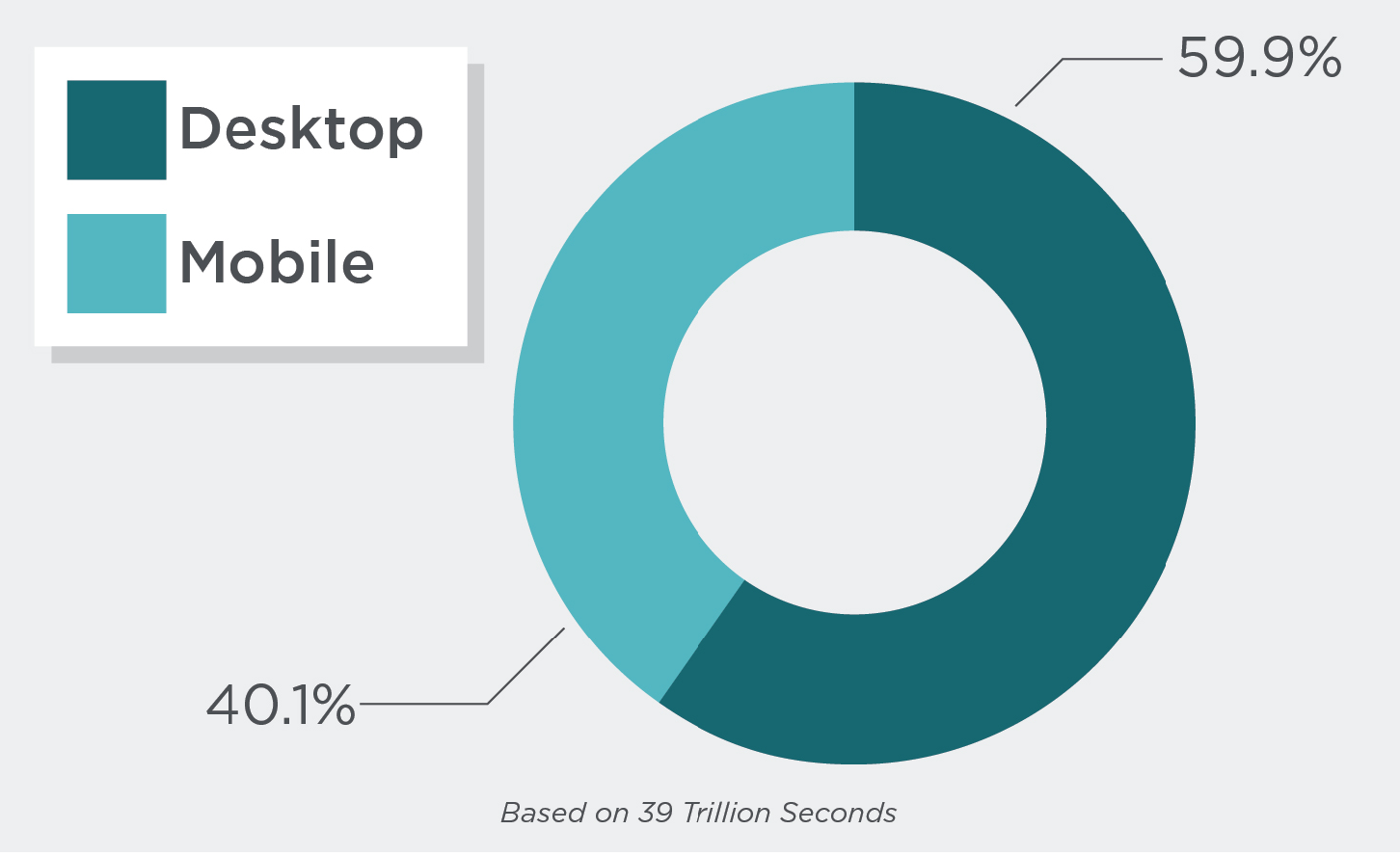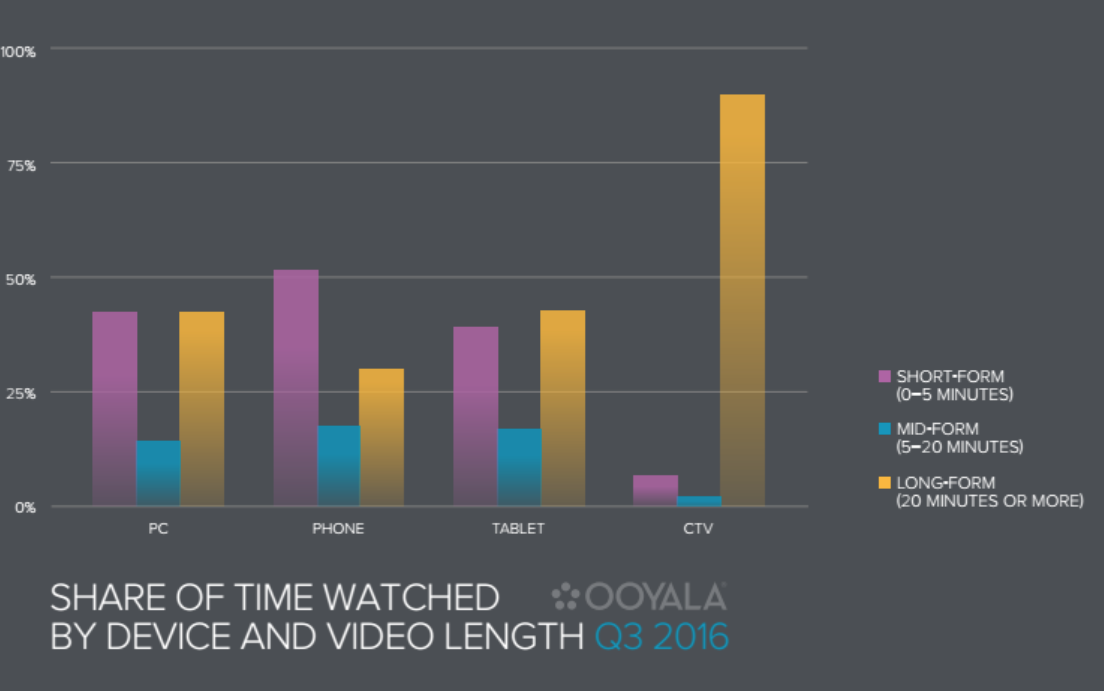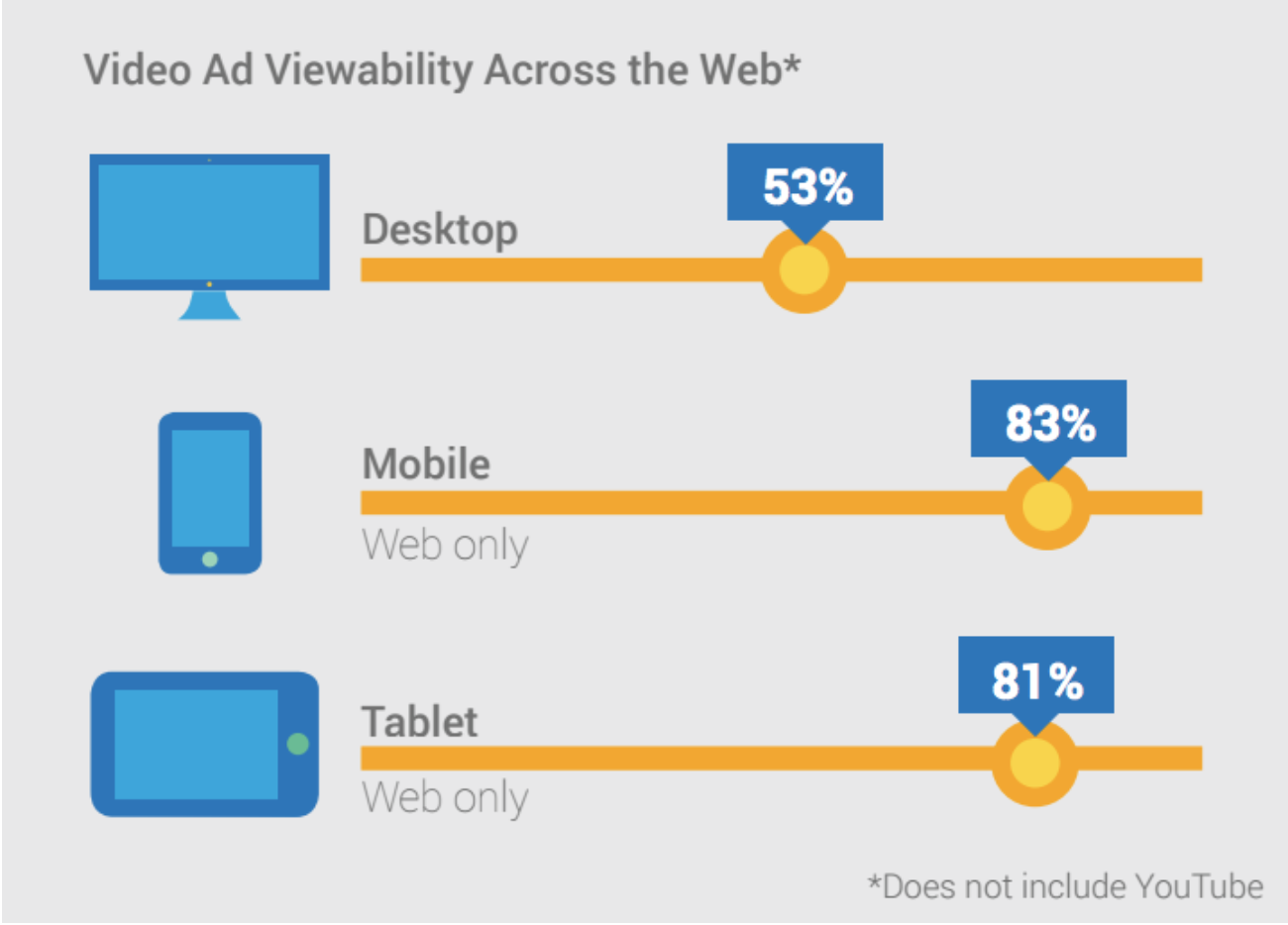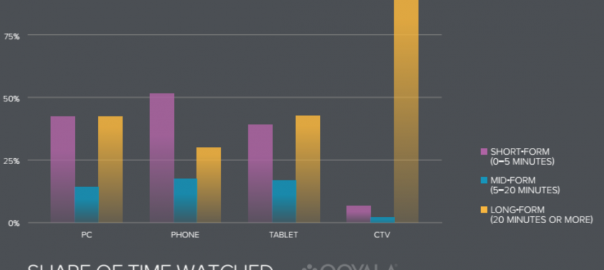— October 24, 2017
We’re all walking around with phones semi-glued to our hands, so it only makes sense that mobile usage has been increasing at a rate fast enough that it has surpassed desktop usage. We’re spending more time than ever on our mobile devices. That may not be ideal for our physical, emotional, and social health, but it definitely works as an advantage for marketers.
Not only are we spending more time on mobile, we’re also spending more time watching videos on mobile. Since videos are often created on desktops and with desktop users in mind, it’s important to understand not only how to optimize videos for mobile, but how users are watching videos differently on both.
In this post, we’re going to take a close look at how desktop and mobile video consumption differs, and what this means for businesses.
What Counts as Mobile?
Before we get started, this is a good question to clear up, because I’ve seen it a lot. Which devices count as mobile, and which count as desktop?

Desktop devices are those that you can’t hold and use in your hand. This includes laptops, even though laptops are technically mobile. Mobile devices include phones, tablets, and other “smart” devices like the later generations if iPods.
Because the two may be used on different occasions and in different ways, it’s essential to understand how the shift from desktop usage to mobile has shifted video consumption and what businesses can do to prepare for it.
Who is Watching More Video?
Right now, mobile users are watching more videos than desktop users. This is almost definitely directly tied to the fact that people are using mobile more than desktop. More than half of video—both PPC and organic—is now watched on mobile devices, growing 233% since 2013. It’s also worth noting that viewers are definitely spending significantly more time on smart phones than tablets; this means you really want to prioritize content that will do well on those small screens.

While more video views are happening on mobile, desktop users are still spending more time on your site. Image source: stone temple
Also worth noting: while mobile viewers account for more site traffic, desktop traffic stays on your site longer. This is a good reminder that desktop is not obsolete, and that you need to be optimizing your site and your videos for both.
What Types of Videos Are People Watching?
It’s no surprise that when people sit down in front of their TV, they’re normally fully intending to watch long-form content. Desktop users have historically been more open to long-form video content, as they were sat down in front of a computer and didn’t have to worry about the videos eating up data.

Image source: Ooyala
Surprisingly, several recent studies have found that mobile viewers are increasingly watching more long-form content, too. While users prefer that social videos—particularly PPC campaigns like Facebook or Instagram Ads—are under five minutes, they’re also open to watching more long-form videos in general. One 2016 survey found that 48% of all videos watched on mobile were five minutes or longer, and that 30% were 20 minutes or longer. Another found that 36% of mobile users said they watched videos of 5+ minutes on a daily basis. This is significant.
How are Viewers Finding Videos?
Desktop viewers might seek out videos, or stumble across them on websites. On mobile, however, it’s apps that are carrying the burden when it comes to video discovery. And when it comes to video discovery, YouTube is currently the platform that you want to be on.
According to one study, 62% of mobile consumers discovered video first through YouTube; 33% discovered videos through social, 20% from organic search, and 14% from advertising like banner ads or Facebook Ads. On YouTube, however, people are actively seeking out content and searching for it; on social, they’re more likely to stumble upon it.
What About PPC?
Mobile users are watching more video ads than desktop users, making mobile users an important audience that you should never exclude with your campaigns. Google found that video ad viewability was significantly higher among mobile users than desktop; mobile viewability was at 83%, and desktop was only 53%. This is partially thanks to desktop ad blockers, and partially because mobile viewers were watching the videos longer.

Image source: marketingland
Desktop vs. Mobile Video: Engagement, Interaction, and More
Ultimately, this is the section that perhaps matters more than any of the others: which gets more engagement and makes more of an important- desktop or mobile video?
Given the direction of this article so far, it’s not overwhelmingly surprising that the answer is mobile.
An incredible article in Adweek demonstrates that mobile consistently has higher view completion rates, more engagement, and more user engagement. The same article also found that mobile dominated when it came to capturing a users’ full attention; this is largely thanks to the fact that it takes up more the screen on mobile, reducing distractions.
Which Is Best for Sales?
And this is where those higher site retention times come into play. While mobile video is most engaging and impactful, videos designed to immediately drive conversions are better served on tablets or desktops than mobile phones. It’s just easier for customers to move through the checkout process, which explains why both desktop and tablet users are 2-3x more likely to purchase than phone users.
So what does this mean? Focus on brand awareness/lead generation videos being shown to mobile users. Then, when it comes to videos designed to drive immediate conversions, focus them more on desktop and tablet.
Final Thoughts
When you look at the desktop vs. mobile video consumption, it’s clear that mobile views has increased and evolved much faster than desktop consumption. Because of this, it’s essential to stay up to date with current mobile video trends so you can always be presenting customers with the content they most want to see.
Digital & Social Articles on Business 2 Community
(100)






